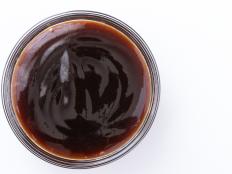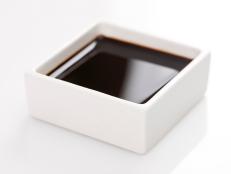Chile Crisp Is the Condiment You Need Right Now
It's even great on ice cream.

Mackenzie Smith Kelley, courtesy of Fly By Jing
Get a Premium Subscription to the Food Network Kitchen App
Download Food Network Kitchen to sign up and get access to live and on-demand cooking classes, in-app grocery ordering, meal planning, an organized place to save all your recipes and much more.
I feel the same way about condiments in my fridge and pantry as I do about clothes in my closet: You’ve got to get rid of something to make room for anything new. And as much as I love trying new food products, I also like to make sure I use what I have, and to be sure that what I have serves a variety of purposes. Whether it’s a condiment, premade sauce or spice blend, the item needs to check three boxes. It has to be unique, something I can’t easily make myself, and something that can be used in many different ways.
This is why my favorite condiment is chile crisp. When you’re eating some of the same pantry staples and go-to recipes on repeat, chile crisp is a secret weapon to add layers of flavor and shake up the norm. The infused chile oil is made with peppers, aromatics and seasonings, creating a spicy, salty and, yes, crispy topping — as the name, chile crisp (or chili crisp), would imply, not only does it add flavor to any dish, it also adds a crispy texture.
You can try making your own with our recipe, or find one of several varieties to buy online, but the particular version I love is the Sichuan Chili Crisp by Fly By Jing. I had the pleasure of trying this sauce while working on set with the chef and owner of Fly By Jing, Jenny Gao, and was immediately hooked by its flavor. It is an umami bomb of spicy Sichuan peppercorns with mushroom powder and fermented black beans to give it a depth of flavor that no standard dash of hot sauce could give. It is rounded out by aromatics like garlic, ginger and shallots.
So Sichuan Chili Crisp is unique and, since Jenny sources the ingredients from Sichuan, I can’t make it myself — 2 out of 3 of my boxes are checked to make it into my pantry — but can it be used in many different ways?
ABSOLUTELY. When I first met Jenny, she said that this Sichuan Chili Crisp is so good you can even eat it on ice cream. My initial skepticism aside, I have tried it on vanilla ice cream and Jenny was not wrong, in fact my exact words after eating a full mug of ice cream and Sichuan Chili Crisp were “I’m not mad at it.” If you are looking for other ways to use the sauce here are a few of my personal favorites (to be exact, my top 10, in no particular order):
- Top your baked potato with a good drizzle.
- Drizzle over pizza, literally any kind, even those of you who like Hawaiian Pizza (I’m not mad at that either).
- Top your eggs with it; deviled (instead of paprika), scrambled, hard boiled or fried are all amazing but if you go all out and make eggs Benedict, this sauce will upgrade those eggs benny like never before.
- Your bagel-with-lox build will never be the same.
- Mix into your mac and cheese to taste.
- Add it as a base in soups, stews or, my favorite, chili.
- Make it into a spicy mayo, then add it to burgers or sandwiches (your guests will be wanting the recipe for your secret sauce).
- Marinate protein in it or add it to a brine — it works great with pork, fish, tofu or my personal favorite – in a buttermilk brine instead of hot sauce for fried chicken.
- Add it to softened butter for an incredible compound butter that can be used to serve with steak, on grilled corn or on grilled baguette (think updated garlic bread).
- Toss with roasted or grilled vegetables, like Brussels sprouts, carrots, or asparagus. I prefer to toss the vegetables with the chile crisp after they are roasted or grilled.
The possibilities are really endless (I didn’t even get to stir fries, salad dressings or noodles) so grab a jar, make room on your shelf because I promise you this is a forever piece.
Related Content:

































































